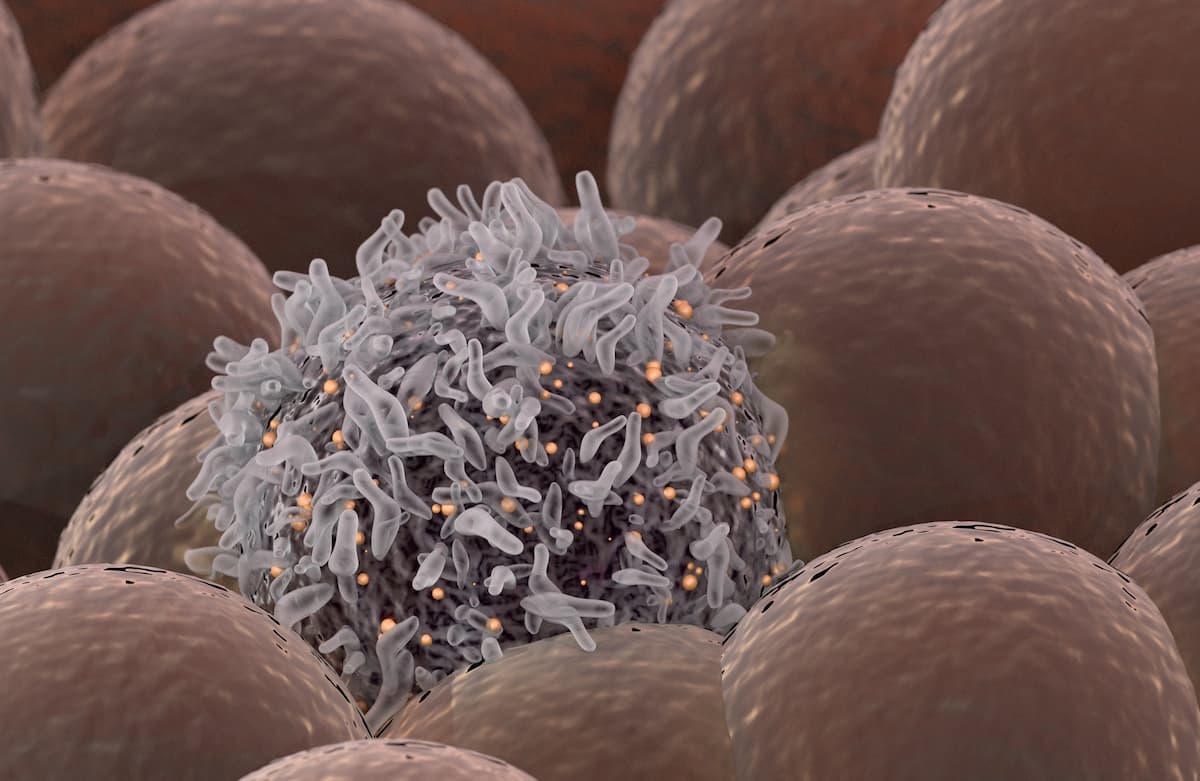Pre-BLA Meeting Successful for RP1 Combo in Anti–PD-1–Failed Melanoma
Support for the planned biologics license application comes from data showing a 32.9% response rate with RP1 plus nivolumab for melanoma.
Support for the planned biologics license application comes from data showing a 32.9% response rate with RP1 plus nivolumab for melanoma.

The FDA held a successful pre-biologics license application (BLA) meeting for vusolimogene oderparepvec (RP1) in combination with nivolumab (Opdivo) for the treatment of anti–PD-1–failed melanoma, supporting an accelerated approval pathway in the second half of 2024, according to a press release from the drug’s developer, Replimune Group, Inc.1
Supporting data for the planned BLA comes from the phase 2 IGNYTE trial (NCT03767348) showing an objective response rate (ORR) of 32.9% per RECIST v1.1 criteria for RP1 In combination with nivolumab for patients with anti–PD-1–failed melanoma.2 Additionally, 55% of patients experienced clinical benefit, defined as having either a complete response (CR), partial response (PR), or stable disease (SD). All responses were sustained for 6 or more months, with a median duration of response (DOR) of 36.6 months (95% CI, 23.9-not reached [NR]).
“This successful pre-BLA meeting confirmed that the accelerated approval path is available for RP1 in anti–PD-1–failed melanoma,” said Sushil Patel, PhD, chief executive officer at Replimune, in the press release.1 “With the confirmatory IGNYTE-3 trial [NCT06264180] underway, we remain on track to submit the BLA in [the second half of] 2024 and continue our preparations to bring RP1 to patients with advanced melanoma.”
Investigators of the open-label, dose-expansion study assigned 156 patients with advanced or metastatic cutaneous melanoma to receive initial intratumor RP1 at 1 x 106 plaque-forming units (PFU)/mL followed by 1 x 107 PFU/mL combined with nivolumab at 240 mg intravenously every 2 weeks for up to 8 cycles.3 Then, intravenous nivolumab was administered at 240 mg every 2 weeks or 480 mg every 4 weeks for up to 2 years, with the option to receive further RP1 dosing if certain criteria were met.
The median patient age was 62 years (range, 21-91), 104 (66.7%) were males, and 81 (51.9%) had stage IV M1b/c/d disease. In total, 117 (75%) patients received prior anti–PD-1 therapy outside of the adjuvant setting, 74 (47.4%) received both anti–PD-1 and anti–CTLA-4therapy, and 17 (10.9%) received BRAF-directed therapy. Furthermore, 105 (67.3%) patients had primary resistance to prior anti–PD-1 therapy, and 50 (32.1%) had lactate dehydrogenase (LDH) greater than the upper limit of normal.
The primary end points of the study were safety, tolerability, and ORR per modified RECIST v1.1 criteria. Secondary end points included DOR, CR rate, disease control rate (DCR), progression-free survival (PFS) by central and investigator review, and 1- and 2-year overall survival (OS).
Among all patients with a follow up of at least 12 months (n = 156), 23 (14.7%) and 28 (17.9%) had a CR or PR, respectively. Additionally, among patients with primary resistance to anti–PD-1 therapy (n = 105), there were 18 (17.1%) CRs and PRs each. Furthermore, 12- and 24-month DOR rates were 84.2% and 65.2%, respectively.
Treatment-related adverse events (TRAEs) were primarily grades 1 or 2, with no grade 5 events observed. Data showed single instances each of grade 4 cytokine release syndrome, myocarditis, lipase increase, alanine aminotransferase increase, blood bilirubin increase, hepatic cytolysis, and splenic rupture. Common any-grade TRAEs included chills (34.0%), fatigue (33.3%), pyrexia (31.4%), nausea (22.4%), and influenza-like illness (19.2%).
Key eligibility criteria included having progression while receiving a prior anti–PD-1 therapy for at least 8 weeks, with anti–PD-1 treatment being the last therapy before enrolling on the trial. Additionally, patients must have progressed on prior adjuvant therapy if applicable.
Independently reviewed data from IGNYTE will be presented during an oral session at the 2024 European Society for Medical Oncology (ESMO) Annual Congress in Barcelona.
References
- Replimune announces positive pre-BLA meeting with FDA and confirms BLA submission on track for 2H 2024. News release. Replimune Group, Inc. September 9, 2024. Accessed September 10, 2024. https://tinyurl.com/yrjffwxa
- Primary analysis of the IGNYTE registrational cohort in anti-PD1 failed melanoma. Replimune Group, Inc. June 6, 2024. Accessed September 10, 2024. https://ir.replimune.com/static-files/2137036f-c2da-405c-b661-7f557bbdc781
- Wong MKK, Sacco JJ, Robert C, et al. Efficacy and safety of RP1 combined with nivolumab in patients with anti–PD-1–failed melanoma from the IGNYTE clinical trial. J Clin Oncol. 2024;42(suppl 16):9517. doi:10.1200/JCO.2024.42.16_suppl.9517